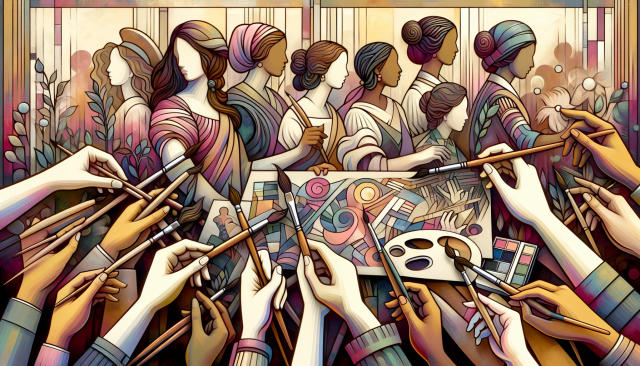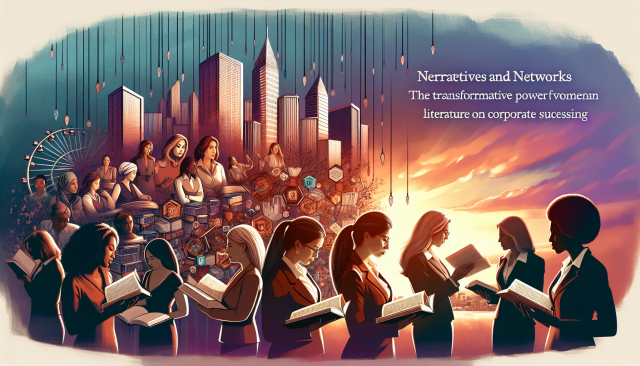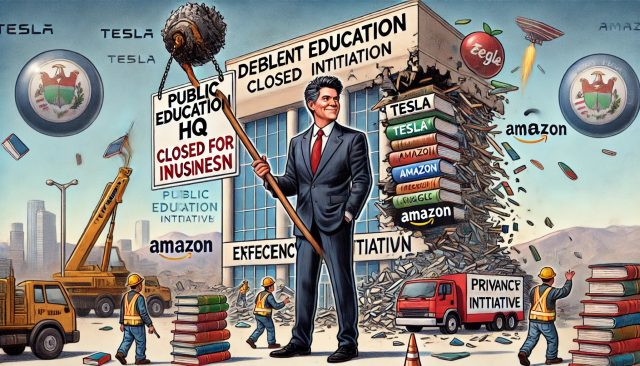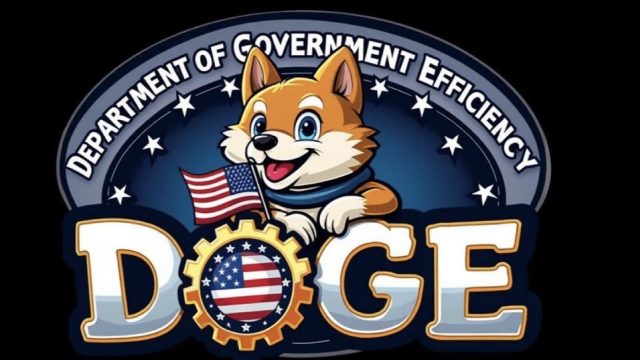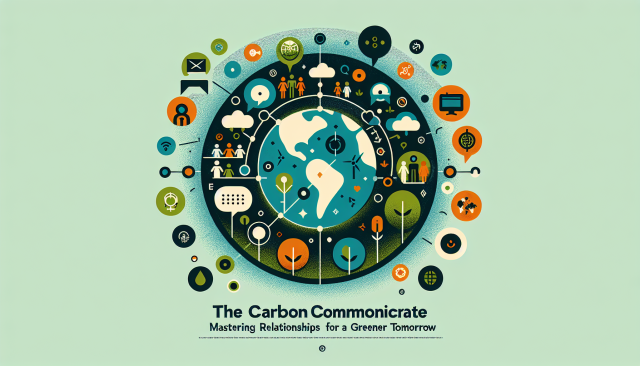In the wake of the Department of Government Efficiency (DOGE) initiative, many have reached out to us to analyze its impact through the lens of the Human Adaptability and Potential Index (HAPI). Given HAPI’s focus on measuring adaptability, resilience, and long-term growth, we took a deep dive into DOGE’s structure, objectives, and potential challenges. Below is a three-part analysis exploring whether DOGE is a true step toward sustainable government modernization—or simply an efficiency push that overlooks the human factor.
Analyzing DOGE: A HAPI Perspective on Government Efficiency
Introduction: Efficiency in Government—A Complex Challenge
Governments worldwide face the dual challenge of increasing efficiency while maintaining adaptability. The newly established Department of Government Efficiency (DOGE) seeks to address inefficiencies in federal operations by modernizing technology, processes, and inter-agency coordination.
While efficiency and modernization are clear goals, their successful implementation depends on how well government institutions and their employees can adapt to change. From the lens of the Human Adaptability and Potential Index (HAPI), a framework designed to measure and foster adaptability, DOGE presents both opportunities and challenges.
In this analysis, we will evaluate DOGE’s structure, mandate, and approach through HAPI’s core dimensions: ✅ Cognitive Adaptability (ability to learn and solve new problems) ✅ Emotional Adaptability (capacity to handle stress and uncertainty) ✅ Behavioral Adaptability (willingness to change routines and workflows) ✅ Social Adaptability (ability to collaborate across teams and roles) ✅ Growth Potential (capacity for long-term skill development and leadership)
By assessing DOGE through these factors, we can better understand whether the initiative is positioned for long-term success or short-term disruption.
1. The DOGE Mandate: What Is Being Proposed?
DOGE is designed to streamline government operations by focusing on three key areas:
1️⃣ Technology Modernization – Upgrading federal software, IT systems, and data-sharing capabilities. 2️⃣ Inter-Agency Efficiency – Standardizing processes and improving collaboration between departments. 3️⃣ Administrative Reorganization – Establishing a temporary task force (U.S. DOGE Service Temporary Organization) to lead the initiative for 18 months.
To execute this plan, DOGE renames and restructures the United States Digital Service (USDS), placing a new USDS Administrator within the Executive Office of the President. Each government agency must form a “DOGE Team” consisting of engineers, attorneys, and HR professionals to support implementation.
In essence, DOGE attempts to centralize modernization efforts while ensuring that each agency has internal support to implement changes.
2. Strengths of DOGE from a HAPI Perspective
From an adaptability standpoint, several aspects of DOGE align with best practices for organizational change:
✅ Focus on Technology & Process Efficiency DOGE’s emphasis on modernizing IT infrastructure and improving data interoperability aligns with the need for cognitive adaptability in government. Digital transformation efforts often require workers to learn new systems, automate processes, and transition away from legacy tools. A structured modernization plan could help agencies build adaptability in problem-solving and digital skills.
✅ Cross-Agency Collaboration (DOGE Teams) By requiring agencies to form dedicated DOGE Teams, the initiative encourages social adaptability—the ability to work across departments, adjust to different work styles, and share best practices. If executed properly, this could reduce bureaucratic silos and foster peer-driven learning.
✅ Data-Driven Decision-Making DOGE mandates greater data-sharing and interoperability among government agencies, a move that supports behavioral adaptability. Real-time access to cross-agency insights could help leaders make evidence-based policy adjustments rather than relying on outdated reports.
3. Key Challenges from a HAPI Perspective
While DOGE has positive intentions, there are significant gaps in how it approaches human adaptability, which could undermine its success.
🚨 Short-Term Thinking & Temporary Structure
- DOGE is structured as an 18-month initiative, with the U.S. DOGE Service Temporary Organization set to expire in July 2026.
- Government modernization requires long-term cultural shifts, not just short-term process updates.
- Without institutional memory and continuity, agencies may revert to old inefficiencies once the initiative ends.
🚨 Centralization vs. Agency-Level Flexibility
- The USDS Administrator reports directly to the White House, which centralizes decision-making rather than empowering agencies to tailor changes to their specific needs.
- Research suggests that bottom-up adaptability (where workers innovate within their own teams) is more sustainable than top-down directives.
🚨 Lack of Workforce Adaptability Training
- The initiative focuses on technology adoption but does not include structured workforce reskilling.
- Studies show that organizations that prioritize workforce adaptability training see 30% faster adoption of new systems.
🚨 Efficiency vs. Resilience Tradeoff
- While efficiency is valuable, government institutions also require resilience—the ability to navigate uncertainty, policy shifts, and crises.
- If DOGE pushes strict efficiency metrics without flexibility, it may reduce agencies’ ability to handle unexpected challenges.
4. What Could Strengthen DOGE?
To maximize effectiveness, DOGE could integrate adaptability-focused strategies, including:
🔹 Long-Term Adaptability Planning – Instead of a temporary 18-month structure, create a permanent adaptability task force that evaluates both efficiency and workforce adaptability over time.
🔹 Decentralized Adaptability Metrics – Allow agencies to set their own pace for modernization, rather than following a rigid, top-down schedule.
🔹 Reskilling & Continuous Learning – Invest in adaptability training programs to ensure that employees can adjust to new processes without resistance.
🔹 Behavioral Incentives for Adaptability – Recognize and reward employees and teams that demonstrate high adaptability in implementing DOGE initiatives.
5. Conclusion: DOGE as an Opportunity for True Government Evolution
DOGE is a well-intended effort to enhance government efficiency, but efficiency alone is not enough.
From a HAPI perspective, modernization must be coupled with human adaptability strategies to ensure that changes are not just implemented but sustained.
As the initiative moves forward, a critical question remains: 👉 Will DOGE simply optimize processes, or will it build an adaptable workforce that ensures government efficiency for decades to come?
By embedding adaptability metrics into its framework, DOGE has the potential to transform government operations—not just for the next 18 months, but for the long-term future.
DOGE vs. HAPI: The Efficiency-Adaptability Paradox in Government
Introduction: Is Efficiency Enough?
Efficiency is often seen as the ultimate goal of government modernization. A faster, more streamlined bureaucracy means less wasted time, lower costs, and better public services. This is the core argument behind the Department of Government Efficiency (DOGE)—an initiative designed to overhaul federal IT systems, improve inter-agency coordination, and cut administrative inefficiencies.
But from the Human Adaptability and Potential Index (HAPI) perspective, efficiency alone is not a reliable measure of long-term success. In rapidly changing environments, efficiency without adaptability can actually make institutions more fragile.
Consider a highly optimized supply chain that minimizes costs and maximizes speed—until a crisis disrupts it. Without built-in adaptability and flexibility, efficiency can collapse under pressure. The same risk applies to government operations.
This blog explores the efficiency-adaptability paradox, breaking down where DOGE excels, where it falls short, and what can be done to strike a balance between modernization and resilience.
1. The Efficiency-Adaptability Paradox: A Double-Edged Sword
🔹 Efficiency = Optimization for Known Conditions 🔹 Adaptability = The Ability to Handle Uncertainty
When a system is highly optimized, it becomes excellent at doing what it was designed to do. But if conditions change—new regulations, global crises, technological shifts—that same system may struggle to adjust.
💡 Case Study: The U.S. Pandemic Response During the early months of COVID-19, the federal supply chain for emergency medical equipment was optimized for predictable demand. It was efficient under normal conditions, but when demand surged unpredictably, the system struggled to adapt, leading to shortages and delays.
💡 Case Study: Tech Disruptions in Government Many state unemployment systems run on decades-old software that worked efficiently—until the massive influx of pandemic-related claims exposed their inability to scale and adapt. The lack of built-in adaptability resulted in weeks-long delays and system crashes, despite prior efficiency.
How This Applies to DOGE
DOGE is fundamentally an efficiency initiative. It prioritizes: ✔ IT modernization ✔ Inter-agency data access ✔ Process standardization
But it does not currently address: 🚨 How well government employees will adapt to these changes 🚨 How agencies will handle future disruptions post-modernization 🚨 Whether an efficiency-focused approach will reduce long-term resilience
This is where the HAPI framework comes in—highlighting the missing human factor in government modernization.
2. Breaking Down DOGE Using HAPI’s Adaptability Dimensions
HAPI defines adaptability in five key dimensions. Below, we analyze how DOGE measures up in each category:
🔹 Cognitive Adaptability: Learning and Problem-Solving
DOGE encourages IT modernization, which naturally requires employees to learn new systems and solve technical challenges. However, it lacks a structured plan for workforce reskilling, assuming that efficiency will emerge simply from better technology.
✅ Positive: Emphasis on software modernization. ⚠ Risk: No clear mechanism for ensuring that workers can effectively transition to new technologies.
Potential Fix: Integrate cognitive adaptability training (problem-solving exercises, hands-on learning) into agency-wide modernization plans.
🔹 Emotional Adaptability: Handling Change and Stress
Major organizational changes often create uncertainty, resistance, and stress.
DOGE mandates new reporting structures, technology shifts, and process changes—but without a focus on emotional resilience, it risks employee burnout and disengagement.
✅ Positive: Recognition that change is needed. ⚠ Risk: Lack of support for employees experiencing change-related stress and uncertainty.
Potential Fix:
- Include adaptability coaching and resilience programs.
- Use sentiment analysis tools to track employee engagement and stress levels during modernization efforts.
🔹 Behavioral Adaptability: Changing Routines and Workflows
Efficiency initiatives often require major behavioral changes—learning new procedures, switching software, and adjusting to updated workflows.
DOGE introduces a structured approach to IT modernization, but it does not measure or incentivize behavioral adaptability among employees.
✅ Positive: Clear goals for improving process efficiency. ⚠ Risk: No mechanism for tracking whether employees embrace or resist new workflows.
Potential Fix:
- Use real-time tracking to monitor how quickly employees adopt new tools and procedures.
- Reward agencies with high behavioral adaptability (those that quickly transition to new systems).
🔹 Social Adaptability: Cross-Agency Collaboration
DOGE attempts to improve inter-agency efficiency through the creation of DOGE Teams.
While this is a positive step, collaborative adaptability requires more than just team assignments—it needs a culture of open communication and shared problem-solving.
✅ Positive: Establishes cross-agency coordination teams. ⚠ Risk: No structured plan for building social learning networks to enhance collaboration.
Potential Fix:
- Implement peer coaching programs where adaptable employees mentor colleagues.
- Use AI-driven network analysis to track and improve collaboration across agencies.
🔹 Growth Potential: Future-Proofing Government Skills
The most adaptable organizations invest in continuous learning to ensure long-term resilience.
DOGE focuses on efficiency today, but it does not create long-term career pathways that help employees develop future-ready skills.
✅ Positive: Pushes for digital transformation. ⚠ Risk: No long-term workforce development plan to ensure adaptability in the next decade.
Potential Fix:
- Establish a government-wide adaptability tracking system to measure which agencies and employees show the greatest growth over time.
- Reward employees who take initiative in learning new technologies and skills.
3. The Path Forward: Blending Efficiency with Adaptability
Efficiency and adaptability are not mutually exclusive. The ideal government system should be:
🔹 Efficient in known processes 📊 🔹 Adaptable to future unknowns 🔄
HAPI’s Approach to Fixing DOGE
🚀 Shift from Static Efficiency to Continuous Adaptability Rather than making DOGE a one-time initiative, transition it into a long-term adaptability lab that tracks how well agencies sustain efficiency over time.
🚀 Make Adaptability a Key Performance Metric Each agency’s success should be measured not just by cost savings, but by how quickly and effectively they adapt to new challenges.
🚀 Invest in Human-Centered Training Efficiency tools will only work if people know how to use them effectively. HAPI suggests ongoing adaptability training, not just IT upgrades.
Conclusion: Does DOGE Get It Right?
DOGE is a step forward in improving government operations, but it is not enough on its own.
From a HAPI perspective, the initiative over-prioritizes efficiency while neglecting the human adaptability needed to make efficiency sustainable.
Without an adaptability-first approach, DOGE may achieve short-term wins but struggle to create long-term resilience.
The real test will be whether DOGE becomes: 👉 A rigid efficiency measure that works today but struggles tomorrow 🚨 👉 A flexible, adaptability-driven framework that evolves alongside government needs 🚀
The next and final part of this series explores a HAPI-informed blueprint for a government that is both efficient and adaptable for the future.
A HAPI-Informed Blueprint for a Truly Adaptive Government
Introduction: Moving Beyond Efficiency to Long-Term Adaptability
The Department of Government Efficiency (DOGE) represents an ambitious effort to improve government operations through technology upgrades, process streamlining, and inter-agency coordination. As discussed in the previous blogs, DOGE has clear strengths in its focus on efficiency, but it also faces significant risks if it does not incorporate adaptability as a core principle.
From a Human Adaptability and Potential Index (HAPI) perspective, true modernization is not just about making government faster or more cost-effective today—it is about ensuring that government agencies, policies, and workers can continuously evolve to meet the challenges of the future.
This final part of the series presents a HAPI-informed blueprint for DOGE, focusing on how to build a government that is not just optimized, but adaptable—one that thrives not only in stable conditions but also in moments of disruption and transformation.
1. The Four Pillars of an Adaptive Government
To be efficient today and resilient tomorrow, the government must balance:
🔹 Technology Modernization – Ensuring that systems are interoperable, scalable, and secure. 🔹 Workforce Adaptability – Training and reskilling employees to handle change effectively. 🔹 Organizational Flexibility – Creating structures that enable agencies to pivot when necessary. 🔹 Data-Driven Decision-Making – Using adaptability metrics alongside efficiency metrics to track success.
How HAPI Fits In
HAPI provides a structured way to measure adaptability across agencies, employees, and processes, ensuring that modernization efforts do not just focus on cost-cutting but also on future-proofing government institutions.
2. A HAPI-Informed Model for DOGE
Instead of focusing only on efficiency, a HAPI-driven DOGE initiative would prioritize three phases of transformation:
🔹 Phase 1: Establishing an Adaptability Readiness Index (First 6 Months)
What’s the Goal? Before implementing sweeping efficiency reforms, the government must first assess how adaptable agencies and workers are.
HAPI-Based Actions: ✅ Cognitive Adaptability – Test how agencies handle policy shifts and new technology adoption through simulations. ✅ Emotional & Behavioral Adaptability – Use sentiment analysis and engagement tracking to see how employees feel about upcoming changes. ✅ Social Adaptability & Growth Potential – Identify employees who thrive in cross-functional teams and assign them as adaptability leaders.
Outcome: 📊 A baseline HAPI score for each agency, highlighting strengths and areas that need reskilling or additional support before modernization begins.
🔹 Phase 2: Incremental & Human-Centered Digital Modernization (Months 6–18)
What’s the Goal? Rather than making sudden changes across all agencies, modernization should happen in small, controlled rollouts to allow for adaptability tracking.
HAPI-Based Actions: ✅ Pilot Projects Instead of One-Time Overhauls – Implement small-scale digital upgrades in high-adaptability agencies first, using them as a model for others. ✅ Workforce Adaptability Reskilling – Employees undergo adaptability training (cognitive agility, digital learning, emotional resilience). ✅ Behavioral Incentives for Change Adoption – Employees and teams demonstrating high adaptability (quick adoption of new workflows) receive recognition and career advancement opportunities.
Outcome: 📊 Agencies transition to modernized systems at a pace that matches their adaptability, ensuring higher success rates and lower resistance.
🔹 Phase 3: Embedding Adaptability into Government DNA (Months 18–36 and Beyond)
What’s the Goal? To prevent backsliding into inefficiency, adaptability must become a permanent feature of government operations.
HAPI-Based Actions: ✅ Create a Permanent Government Adaptability Lab (GAL) – A cross-agency task force dedicated to continuous efficiency and adaptability tracking. ✅ Adaptability Metrics in Performance Reviews – Government employees are evaluated not just on efficiency, but also on how well they adapt to new challenges. ✅ AI-Driven Real-Time Adaptability Dashboards – Agencies receive ongoing adaptability insights, helping leaders identify bottlenecks before they become system-wide failures.
Outcome: 📊 A government that does not just modernize once but continuously evolves based on real-time adaptability insights.
3. The Future of Government: A Case for Adaptability Metrics
🔹 The Old Way: Measure government success by budget efficiency and speed alone. 🔹 The New Way: Measure success by how well agencies sustain improvements over time.
💡 Example: Singapore’s SkillsFuture Initiative Singapore has integrated adaptability metrics into its workforce strategy, ensuring that government employees continuously reskill and evolve alongside new technologies. The result? One of the world’s most efficient and resilient public sectors.
💡 Example: NASA’s Adaptive Leadership Model NASA’s success in space exploration comes from its emphasis on continuous learning and adaptability—teams undergo real-time adaptability assessments, ensuring that when unpredictable problems arise, solutions are found quickly and collaboratively.
4. Conclusion: A Government That Evolves, Not Just Optimizes
🚀 DOGE, as it stands, is a good first step—but efficiency without adaptability is fragile.
🚀 A truly modern government is not just optimized. It is adaptable.
If the federal government integrates HAPI’s adaptability framework, it can build an agile, forward-thinking workforce that is: ✅ Technologically prepared for future challenges ✅ Resilient in the face of crises ✅ Capable of continuous improvement, beyond short-term efficiency goals
The real challenge is not just making government faster. It’s making it future-proof.
📌 Final Thought: If we measure only efficiency, we risk optimizing for the past. If we measure adaptability, we ensure we are ready for the future.



















